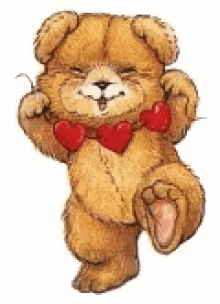Fairy Tales, Goldilocks, Red Riding Hood and the Brothers Grimm.
The Psychology of Fairy Tales.
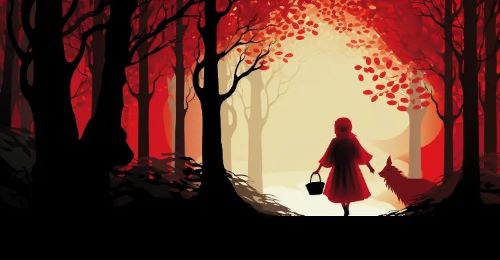
Too Old for Fairy Tales? Goldilocks, Red Riding Hood & the Brothers Grimm. The Psychology of Fairy Tales.
This year saw the release of Too Old for Fairy Tales 2, a wonderful film from Poland. The very wording of its title struck me. Are we ever too old for Fairy Tales?
We grew up on Fairy Tales, of course. Our parents read ’em to us. We were given a book or two of the classic ones. While full of magic, Fairy Tales seemed so grounded in our young reality. Or were we — so young — in touch with realities lost to most adults?
Those dark forests of German Fairy Tales drew us along shadowed paths of misgiving, mystery and magic.
And if you loved the reality behind them, as I do, you never quite outgrew them, eh? Some popular psychologists have explored them. There’s an interest there — What are Fairy Tales about?
Here, from author Tom Horn, is a Guest Blog I just have to share with you:
“Unveiling Life’s Mysteries Through Fairy Tales” by Tom Horn
Discover the profound life lessons hidden within the classic fairy tales of Red Riding Hood and Goldilocks. These narratives, often dismissed as mere children’s stories, hold deeper meanings that can guide us in our daily lives.
While one tale ends in tragedy, the other concludes with a fortunate escape. What can these contrasting fates teach us about making choices? And navigating the complexities of life? Let’s delve into the enchanting world of these stories and uncover the secrets they hold.
The Tale of Little Red Riding Hood: A Cautionary Story
Red Riding Hood, a tale that has been passed down through generations, tells the story of a young girl who encounters a cunning wolf on her way to her grandmother’s house. Despite her mother’s warnings to stay on the path and avoid talking to strangers, Red Riding Hood is swayed by the wolf’s suggestion to gather more food for her grandmother.
This decision leads to a series of unfortunate events. Finally ending in the wolf devouring both the grandmother and Red Riding Hood (although in later versions they are saved by a passing hunter).
The story of Red Riding Hood serves as a metaphor for the dangers of straying from one’s own judgment and succumbing to external influences. It illustrates the perils of ignoring personal intuition in favor of societal expectations or inherited beliefs. The narrative warns against the loss of individual power when one is swayed by living trends or the allure of going beyond what is necessary.
Goldilocks: A Tale of Independence and Moderation
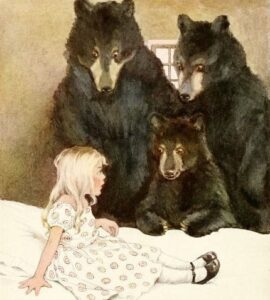 In contrast, Goldilocks is a story of a self-reliant girl who wanders the woods, making her own decisions based on her immediate needs.
In contrast, Goldilocks is a story of a self-reliant girl who wanders the woods, making her own decisions based on her immediate needs.
When she stumbles upon the three bears’ cottage, she samples their porridge, chairs, and beds until she finds the ones that suit her best.
Her adventure ends with a narrow escape from the bears, and she resolves never to return to the woods.
Goldilocks represents the virtue of exercising personal choice and the importance of “tapping the world lightly.” Her story emphasizes the power of moderation. Also the ability to navigate life without being snatched up by outside pressures or trends.
Unlike Red Riding Hood, Goldilocks relies on her own judgment to determine what is “just right” for her, showcasing the strength of an independent spirit.
Originally, this story was called “Silver Hair and the Three Bears.” As time passed, the old woman intruder into the Bears’ cottage grew younger as the story passed from teller to teller.[1]
Life Lessons from Fairy Tales
These fairy tales offer more than just entertainment. They provide valuable insights into human behavior and the consequences of our choices. Red Riding Hood’s tale warns of the dangers of losing oneself in the expectations of others. While Goldilocks teaches the importance of self-reliance and moderation. Both stories highlight the significance of personal power and the impact of our decisions on the course of our lives.
The Importance of Personal Power
The concept of “power” in these stories is not about dominance or control but rather the ability to generate positive outcomes through one’s own actions. It’s about having the “treasure in heaven” accrued through acts of personal strength and wisdom. Red Riding Hood’s misfortune is a result of relinquishing her power to the wolf’s deception. While Goldilocks’ escape is due to her own awareness and restraint.
The Role of Imperfect Knowledge
Both tales also touch on the theme of imperfect knowledge. Red Riding Hood’s lack of understanding of the wolf’s motives leads to her downfall. On the other hand, Goldilocks’ limited awareness of the bears’ return almost costs her safety. These narratives remind us that our knowledge is always incomplete. So we must navigate life with this in mind.
The Influence of Living Trends
Living trends, or the prevailing currents of thought and behavior in society, play a significant role in these stories. Red Riding Hood falls victim to a trend of self-sacrifice and overextension. But Goldilocks remains unaffected by such influences. The tales caution us against being swept away by societal trends that may not align with our true selves.
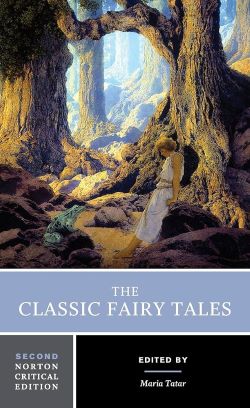
Conclusion: Embracing the Wisdom of Fairy Tales
Fairy tales like Red Riding Hood and Goldilocks are not just for children. They, as well as the stories of Cinderella, Snow White, Hansel, Gretel and so many others, we never forget.
They contain profound wisdom that can guide adults in their daily lives. By understanding the deeper meanings within these stories, we can learn to make choices that align with our personal values and maintain our individual power. Let these timeless tales inspire you to live a life of balance, self-awareness, and authenticity.
Three Essential Studies of the Fairy Tale
For further exploration of the themes in fairy tales, consider reading analyses by scholars such as…
- Maria Tatar has written extensively on the subject. Her book, THE CLASSIC FAIRY TALES (Harvard University Press), delves into the historical and cultural significance of these narratives.
- The works of Austrian psychologist Bruno Bettelheim, particularly THE USES OF ENCHANTMENT (Vintage Books), offer a psychoanalytic perspective on the role of fairy tales in understanding human behavior and development.
- Jack Zipes is known for his modern translations of THE COMPLETE FAIRY TALES OF THE BROTHERS GRIMM. All 242 of them! He also wrote THE BROTHERS GRIMM: From Enchanted Forests to the Modern World (Jack Zipes), part biography of Jacob and Wilhelm Grimm and part cultural study of German Volksliteratur.
Thanks, Tom, for your scholarship and a new look at some of the stories that shaped us!
Too Old for Fairy Tales? Goldilocks, Red Riding Hood & Brothers Grimm. A Conclusion by Brian Alan Burhoe.
“Fairy Tales” are essentially stories about children.
They’re often dark and disturbing narratives that we recognized as real, even then. These stories, of course, belonged to the larger category of Folk Tales. Many of which told stories of adults with grown-up troubles. “Bearskin,” for instance. “The Blacksmith and the Devil.” And “Iron Hans.” “The Blue Light” was one of many Folk Tales with a common theme: a discharged soldier trying to find a place in a world that had no more use for him.
Did You Like This History of Fairy Tales?
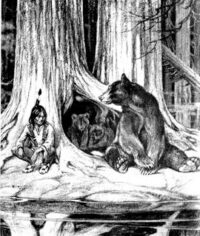 If so, you’ve got to read my popular Folktale “THE BOY WHO WAS RAISED BY BEARS.” A Traditional Native American Animal Story & Legend Retold.
If so, you’ve got to read my popular Folktale “THE BOY WHO WAS RAISED BY BEARS.” A Traditional Native American Animal Story & Legend Retold.
Talking bears and human children adopted and raised by loving mama bears are common story themes in both Old and New World oral traditions. Even J R R Tolkien wrote about Beowulf and Bear’s Son Tales in European folklore.
“I loved this beautiful Animal Tale. Perfect!” Free to Read ==> CLICK HERE THE BOY WHO WAS RAISED BY BEARS
[1] While most Fairy Tales mentioned in this article were of German origin (and collected by the Grimm Brothers) the two stories featured here were not. “Little Red Riding Hood” was of French origin, first published as “Le Petit Chaperon Rouge” in Charles Perrault’s 1697 CONTES DE MA MÈRE L’OYE (Tales of My Mother Goose).
And Robert Southey first published “Silver Hair and the Three Bears” in 1837. He had probably heard this version in the English Lake District, where he had lived for years. (The last wild Brown Bears are thought to have lived in the forests of the Lake District and North Yorkshire.) “Silver Hair” told of three easy-going male bears — named Little, Middle-sized and Huge — and a vagrant, unwashed old woman.
About the Guest Author:
Tom Horn’s articles have appeared on ArticlesFactory. His most recent works include “The Enigma of Existence: Trees, Frogs, and Humans” and “The Inevitable Downfall of Infamous Figures: A Mythological Perspective.” Remarkable reads! Source: Free Guest Posting Articles from ArticlesFactory.com.
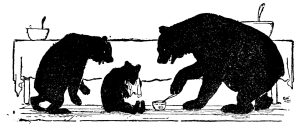
TAGS: Grimm’s fairy tales, German fairy tales, Russian fairy tales, classic fairy tales. List of fairy tales, Grimm fairy tales, Hungarian Folk Tales, Rumpelstiltskin, Volksliteratur.


